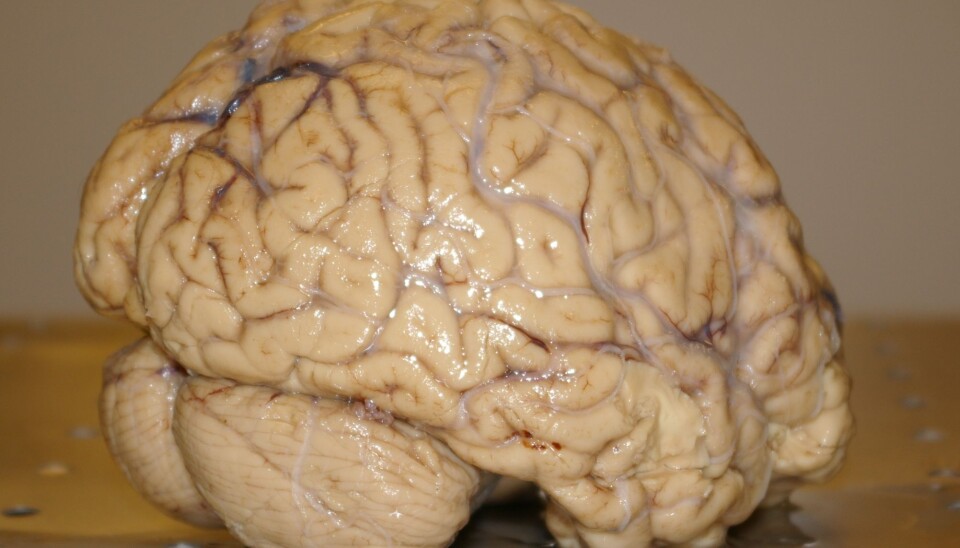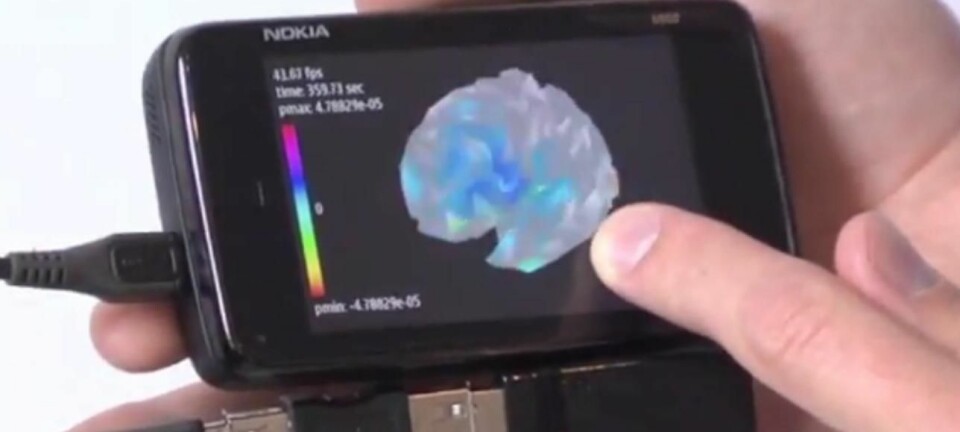An article from Norwegian SciTech News at NTNU

The brain’s zoom button
Everybody knows how to zoom in and out on an online map, to get the level of resolution you need to get you where you want to go. Now researchers have discovered a key mechanism that can act like a zoom button in the brain, by controlling the resolution of the brain’s internal maps.
Denne artikkelen er over ti år gammel og kan inneholde utdatert informasjon.
In this week’s edition of Cell, Lisa Giocomo and colleagues at the Kavli Institute for Systems Neuroscience at NTNU describe how they “knocked out”, or disabled, ion channels in the grid cells of the brain.
Grid cells are equivalent to a longitude and latitude coordinate system in the brain, with the grid cell firing at the cross-point where the longitude and latitude lines meet. This network enables the brain to make internal maps. Ion channels mediate signals between the inside and the outside of the cells.
When the researchers knocked out the ion channels, they found that the resolution of the maps created by the brain became coarser, in that the area covered by each grid cell was larger.
“If grid cells are similar to a longitude and latitude coordinate system, what determines the distance between the coordinate points of this internal map?” Giocomo says. “When we knocked out the HCN1 ion channel, the scale of the innate coordinate system increased. It’s like losing longitude and latitude lines on a map. Suddenly you can’t represent a spatial environment at a very fine scale.”
In a normal brain, the ion channels function as they should, and the brain is able to generate the precise resolution for the map that it needs. But if the ion channels don’t work – as was the case in the experimental set up – then the map isn’t at the right resolution.
Useful for research on Alzheimer's disease
Future research will aim at determining what effect this might have on spatial memory and navigation. Giocomo says her findings could prove useful for future research on Alzheimer’s and related diseases, “particularly because the area that is damaged in Alzheimer’s is the area that we are investigating. Also, one of the first things to go wrong with Alzheimer’s is that you suddenly start to lose your sense of direction. Of course, we don’t know if there is any connection yet, but it might be worth looking into.”
The article in Cell is being published simultaneously with a companion article in Neuron, authored by researchers at the Kavli Institute for Brain Science, at Columbia University in New York. The two Kavli Institutes decided to work cooperatively on the topic, says Edvard Moser, director of the Kavli Institute at NTNU.
“We believe that this is a great example of collaborative research instead of neck-and-neck competition. We got our knock-out mice from Eric Kandel’s lab at Columbia, and they sent a post-doc over here to work with us. We discussed and debated our findings of course, gave each other feedback and input,” Moser says.
The collaborative approach enabled the two institutes to publish linked research data from two interconnected areas of the brain, the entorhinal cortex and the hippocampus. Both sets of data show the effect of removing ion channels in grid cells and place cells. Place cells are thought to base their spatial response based on the calculations of the grid cells, so finding this close correspondence in research results is “very rewarding,” Moser says. “It’s great that we can find two pieces of evidence that show how scale is represented in our brain, and that we can publish these results at the same time."

































